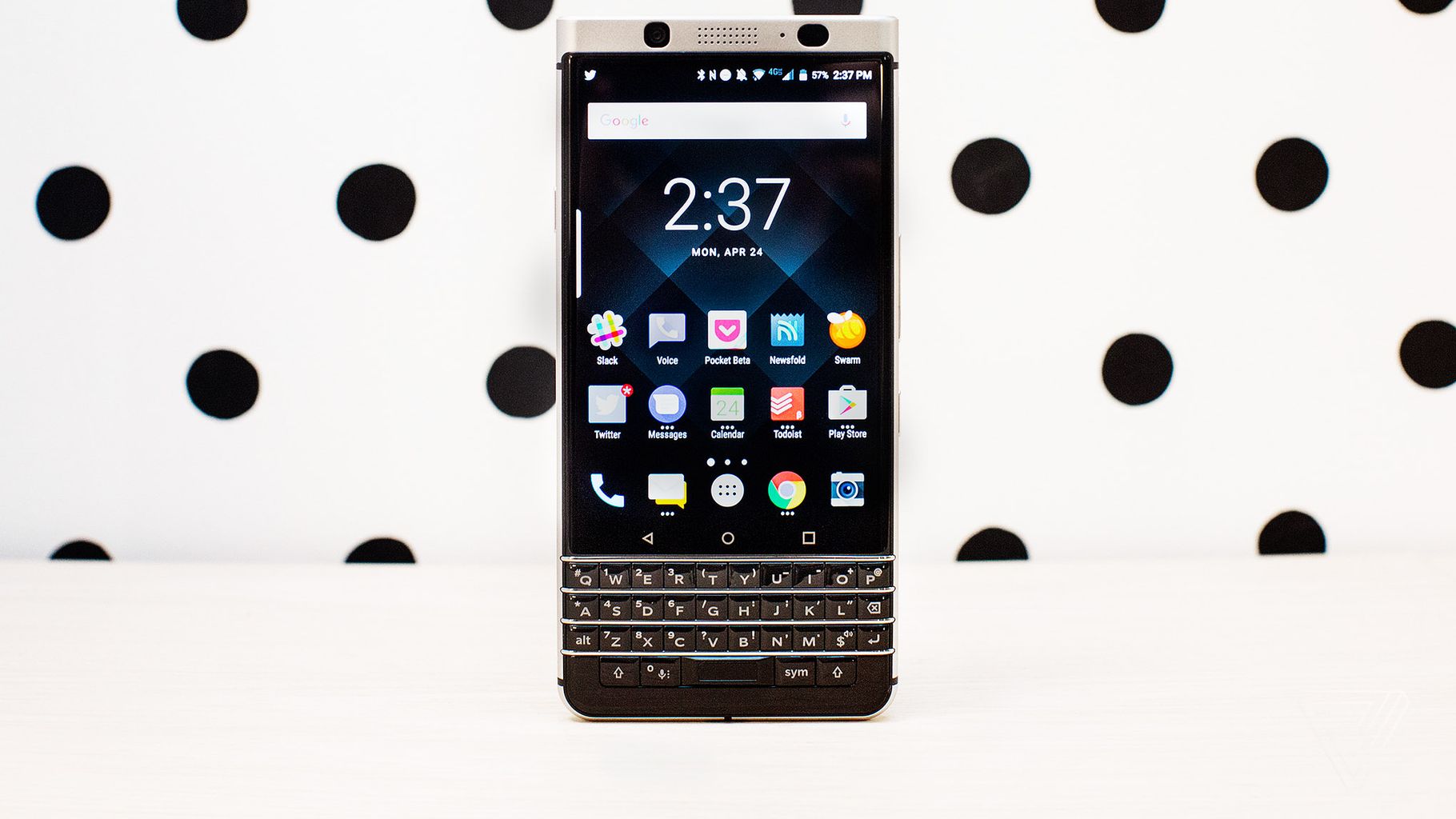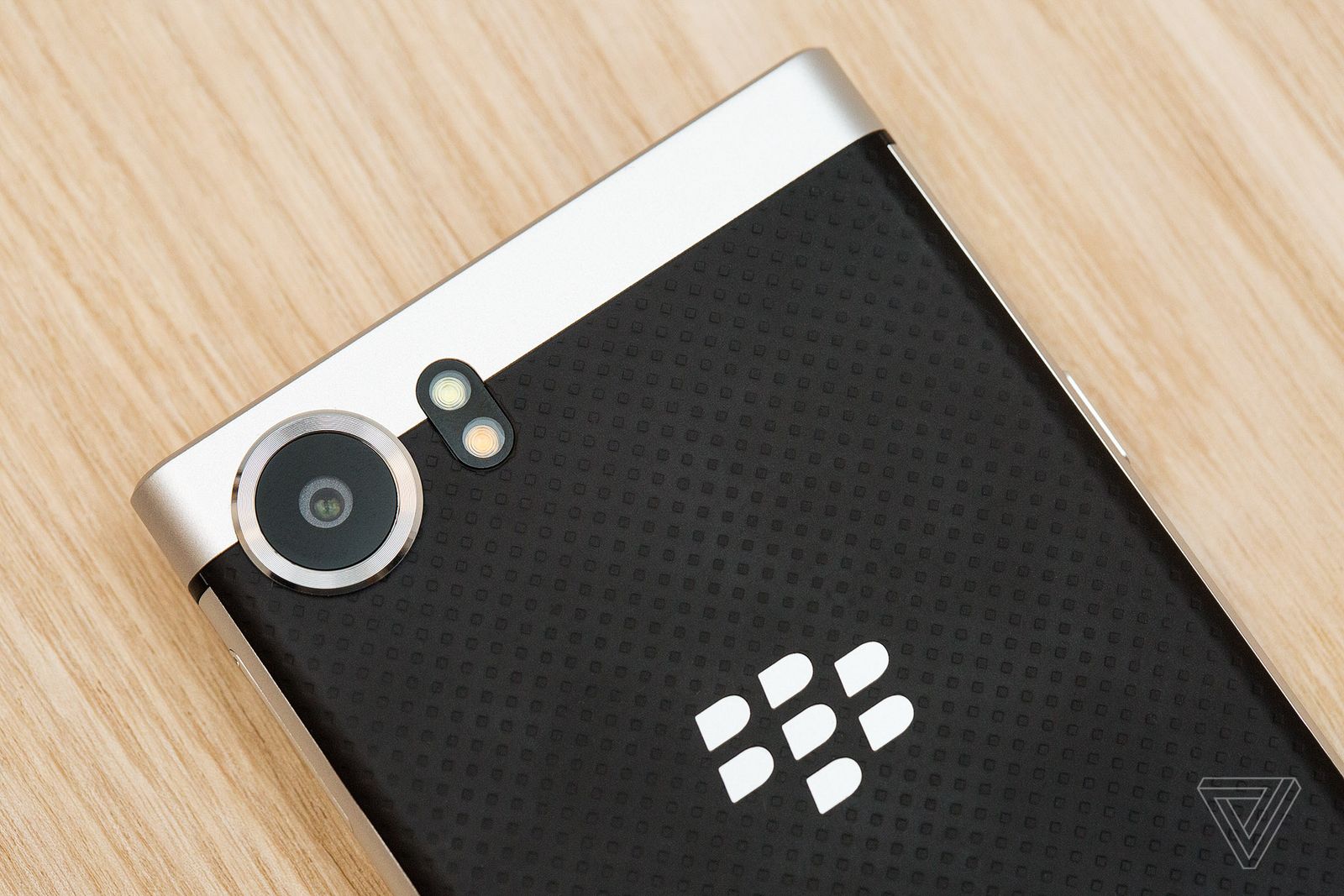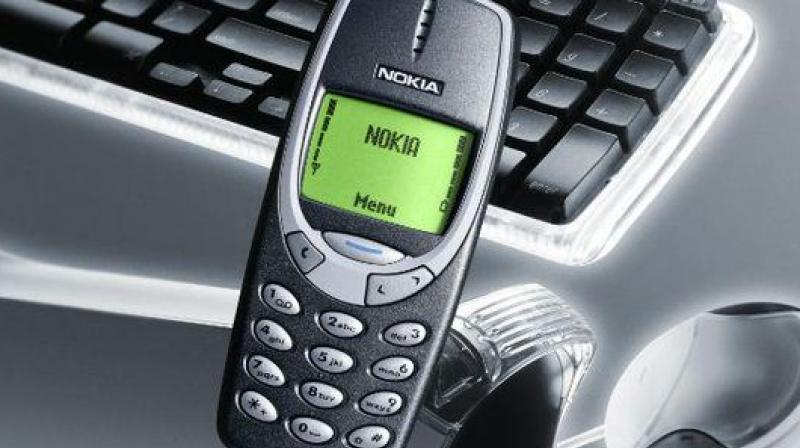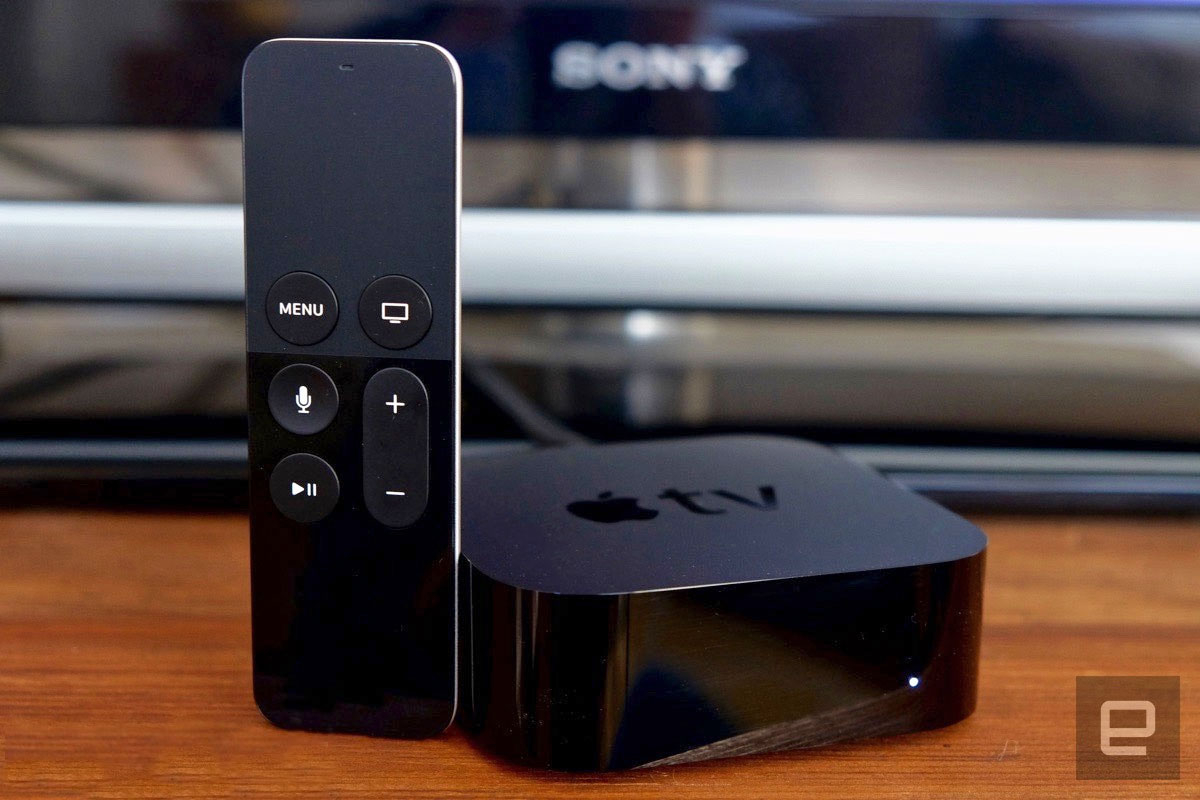
BlackBerry KeyOne review: part productivity, part nostalgia
The KeyOne’s focus on productivity is embodied by its hardware design. Technically, this phone was built by TCL, as BlackBerry itself does not make hardware anymore. And it’s running Google’s Android software instead of BlackBerry’s own operating system. But rest assured, it looks like a BlackBerry through and through, right down to the classic logo embedded in the soft-touch back of the phone. It’s the first model from TCL that truly does look like a BlackBerry and not just another slab-style smartphone.
Obviously, the keyboard is the centerpiece of attention here, and the main reason why anyone would consider purchasing this phone. As far as smartphone keyboards go, rare as they are in 2017, it is very good. The clicky keys are backlit and they have a sloped design. They’re easy to press and easy to run your fingers over. The phone is also comfortably narrow to use in one hand (unlike the oddly wide BlackBerry Passport
or the tall and unwieldy Priv slider), though most of the time I found myself typing with both thumbs.The keys support a variety of programmable shortcuts (up to 52, in all), as any proper BlackBerry should, and the whole keyboard can act as a touch-sensitive trackpad that can be used instead of the touchscreen for scrolling through web pages or long lists of email. A swipe up on the left, right, or center of the keyboard will select the next predicted word while you’re typing, which blends some of the intelligent features of a virtual keyboard with the tactility of the physical one.
Cleverly embedded in the keyboard’s space bar is a fingerprint scanner, which is effortless to use and makes unlocking the KeyOne a breeze. The right side of the phone is home to another BlackBerry staple: a customizable shortcut button that can be set to launch an app or perform a custom action. I’ve got it set to launch the camera; in phone calls, it will mute your line. The signature BlackBerry multicolor notification LED is also present and accounted for.
The KeyOne’s overall aesthetic can best be described as utilitarian — its two-tone silver-and-black look is way more boardroom than nightclub, and it’s not going to stand out in a crowded subway car (unless someone sees that keyboard, of course). But the fit and finish are very good, the volume keys and power button click with satisfaction, and the back’s rubberized finish is comfortable and grippy in ways that all-glass or aluminum phones never are. It is a brick, though, and heavier than you might expect: at 180g, it’s 20 to 40g heavier than a newer Samsung phone or iPhone.
The presence of the physical keyboard dictates the KeyOne’s unique display: a 4.5-inch, 1620 x 1080 pixel touchscreen with a 3:2 aspect ratio. The screen here is essentially the opposite of the elongated displays on the Galaxy S8 and LG G6 — it’s more square than most smartphone screens, which makes it a poor fit for watching widescreen video in portrait or landscape. But BlackBerry says it’s great for composing email, because the KeyOne’s screen can provide up to a third more usable space when typing compared to a 5.5-inch all-touch device that also has to display a keyboard on the bottom half.
If you spend all day in your inbox, then you’ll probably appreciate the KeyOne’s odd screen ratio. But it was constrictive when I was doing other smartphone things, like viewing a webpage, browsing Twitter, or reading my Pocket queue, and it made me scroll a lot more than is necessary with other smartphones. Viewing more than three tweets at a time isn’t possible and using split-screen multitasking is a joke with the KeyOne’s small, cramped display — I’m not sure why that option is even present on this device.
The KeyOne’s internal specs also speak to its productivity focus. It has a midrange Qualcomm Snapdragon 625 processor and a giant 3,505mAh battery. This is the same potent combination as found in last year’s Moto Z Play that can provide stellar battery life, and the KeyOne is a stamina champ as a result. Most people will be able to easily get two days of use between charges; my particularly demanding routine exhausts it in one day. But the only other phone that can last a full day for me is the Z Play, so the KeyOne is at the top of the charts here. It also benefits from Qualcomm’s QuickCharge 3.0 fast charging and a special “boost” mode that can bring the phone from 0 to 50 percent charged in as little as 36 minutes.
The KeyOne’s processor is fine for everyday tasks, including multitasking between various apps. It can handle gaming, as well, and I didn’t run into any notable performance issues during my time with the phone. It won’t blow you away with speed or slickness, but it’s a marathon workhorse that will go from dusk til dawn, which, again, is the entire point of the KeyOne.so in the this-is-fine category are the 12-megapixel rear and 8-megapixel front cameras. The main camera has large pixels and a bright, f/2.0 lens; it is more than capable of taking fine photos. It won’t compete with a Google Pixel or the best from Apple or Samsung, but when you think about the fact that you basically took crap photos the last time you used a keyboard-equipped BlackBerry, this is a definite leap, and it’s fine compared to most smartphones. It’s pretty adept at taking pictures of receipts for my expense reports, which is what I suspect most owners of this phone would use it for.
ontinuing the theme of productivity! The KeyOne’s software has a few extra things to help get work done. It’s running Android 7.1.1 Nougat (with the most-recent April 5th security patch, as of publish date) and has a largely untouched interface from what Google provides. All of BlackBerry’s special sauce is concentrated in the Hub, a centralized place for your email, calendar, tasks, and other forms of communication.
BlackBerry has been working on and iterating the Hub since the days of BlackBerry 10, and now it supports integration with Facebook, Instagram, Twitter, Facebook Messenger, and Slack, in addition to SMS, BBM, and both corporate and personal email. It’s surprisingly efficient to use and even works well with Google accounts, which never cooperated nicely with BlackBerry software in the past. I particularly like the slide-out panel accessible from within any app that shows me unread messages, upcoming appointments and tasks, and my favorite contacts.

y time with the KeyOne has not converted me to a keyboard diehard — I’m still much faster and more comfortable typing with a virtual keyboard and the things I use my phone for benefit from a larger screen. It turns out that I use my phone to avoid getting shit done as much as I use it to be productive. Compared to BlackBerry’s heyday, smartphones are now much more than just productivity tools and for most of us, they need to be as adept at entertainment as they are at doing work.
But I appreciate the KeyOne’s focus: it’s a no-frills productivity machine that targets people still addicted to email and addresses their needs one by one. Its design, keyboard, software, and battery life all work together toward that focus, and it doesn’t even attempt to appeal to a broader audience or try to be a jack-of-all-trades.
I’m not going to make some inane proclamation that “BlackBerry is back” or that everyone will be using physical keyboards again. I’m not even sure I’ll ever even see a KeyOne in use in my daily travels. But if you’ve been longing for a modern smartphone with a real, physical keyboard, with which you can bang through email after email, the KeyOne is the exact phone you’ve been waiting for.







